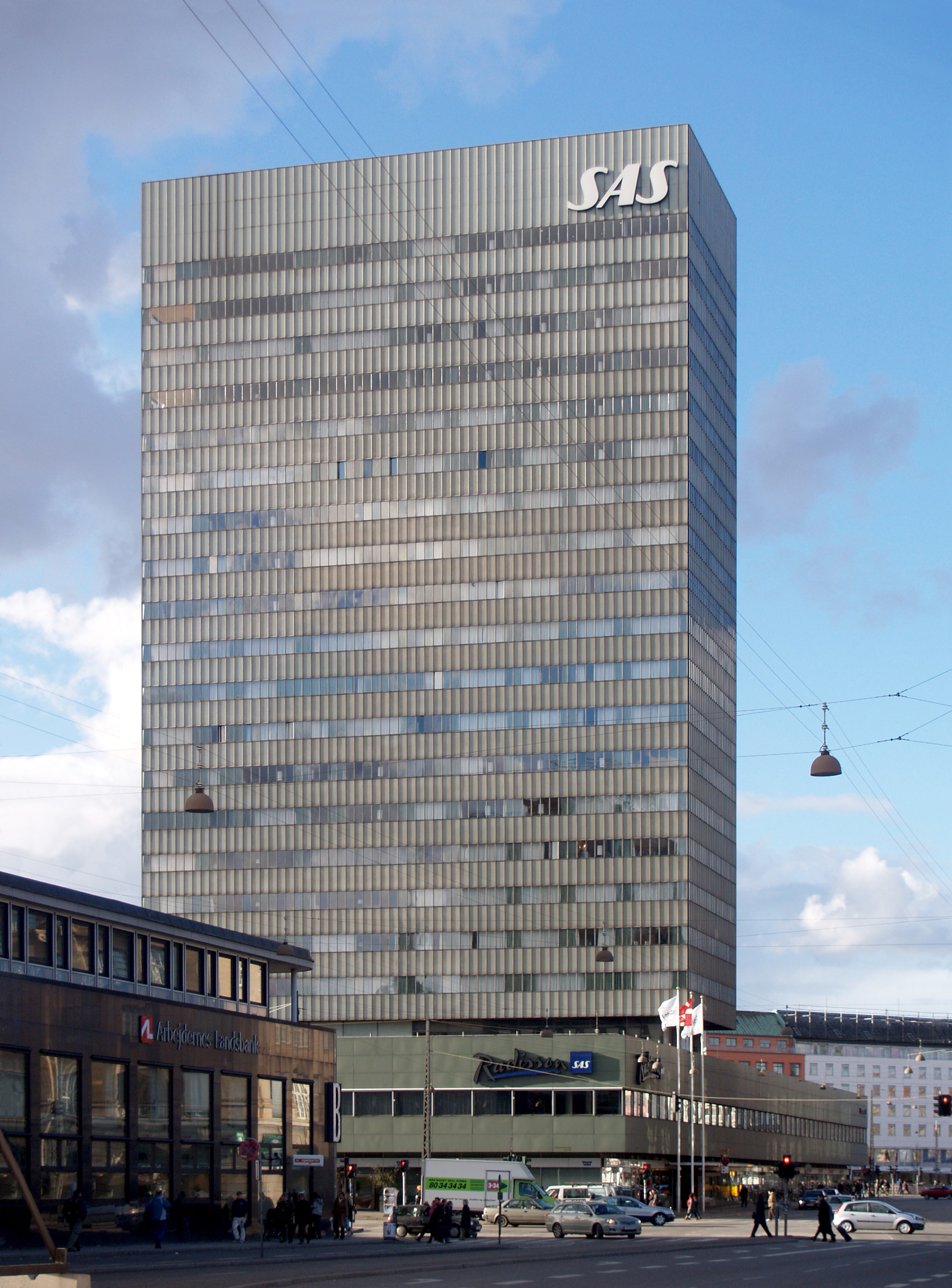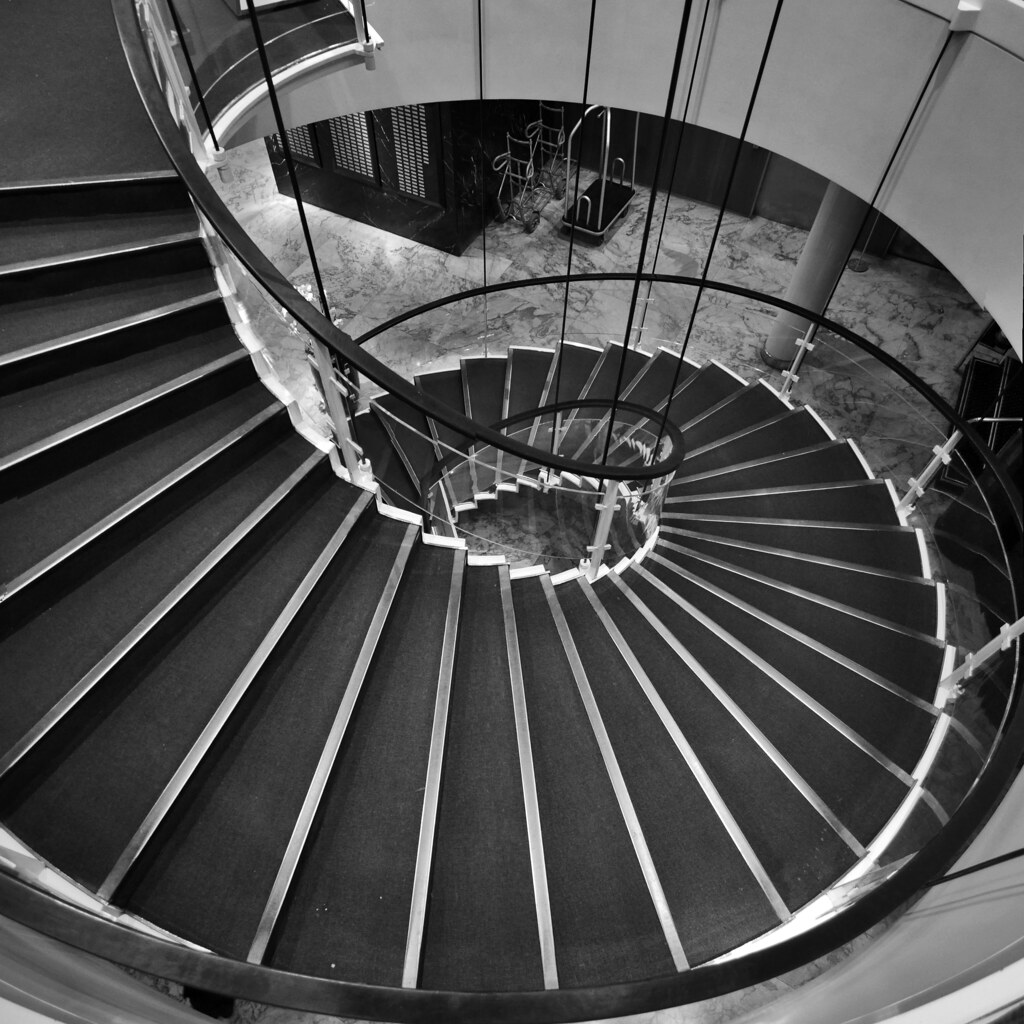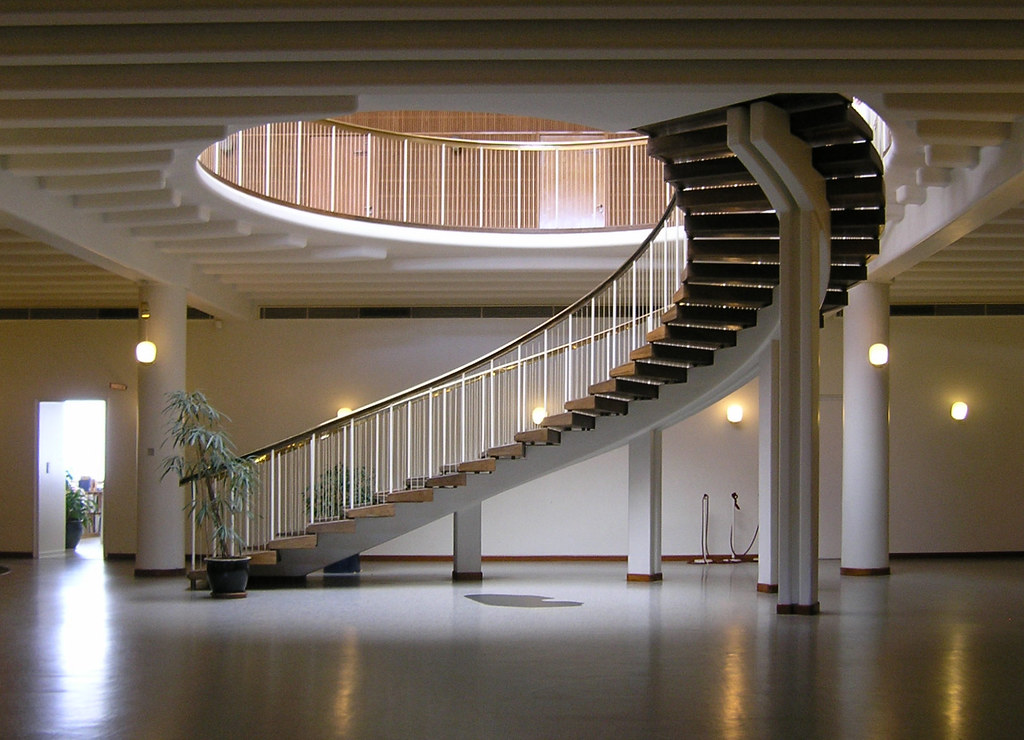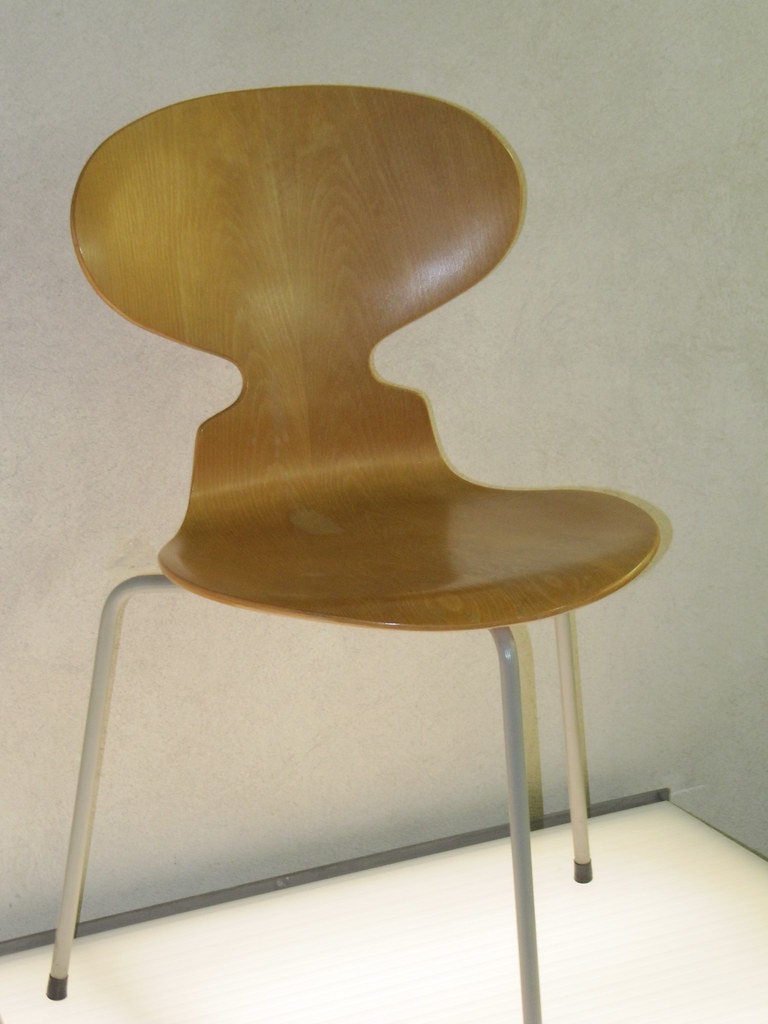One of Denmark’s most influential 20th century architects and designers
Born in Copenhagen in 1902, Arne Jacobsen worked as an apprentice bricklayer before winning a place to study architecture at the Royal Academy of the Arts in 1924. Humble though Jacobsen’s first job may seem, there are echoes with those of other great architects like John Soane and Ludwig Mies Van Der Rohe, who worked for their fathers as a bricklayer and stone mason respectively. It also imbued Jacobsen with the love of materials, which became a dominant feature of his work.

Image source: https://www.scandinavia-design.fr/georg-jensen-jacobsen-candlehold_en.html
The cooperation between Arne Jacobsen and Fritz Hansen dates back to 1934. But it wasn’t until 1952 that Jacobsen made a break-through: the Jacobsen Ant™ Chair. The Jacobsen Series 7™ Chair quickly followed in 1955. This propelled Jacobsen and Fritz Hansen’s names into furniture history.
Which are the main features of Jacobsen’s style?
Like most young architects, Jacobsen started out by designing private houses which, in his case, fused the rationalist simplicity he admired in Mies and Corb’s work with the classicism of his Scandinavian mentors, notably the veteran Swedish architect Erik Gunnar Asplund. The same combination was apparent in Jacobsen’s larger projects such as an extension to the Nøvo pharmaceuticals factory and the Stelling Hus in Copenhagen. With both, Jacobsen was at pains to integrate the new buildings with their surroundings.
Which work symbolizes the essence of Jacobsen’s style?
First among Jacobsen’s important architectural commissions was the Bellavista housing project, Copenhagen (1930-1934). Best known and most fully integrated works, are the SAS Air Terminal and the Royal Hotel Copenhagen for which Jacobsen designed every detail from sculptural furnishings such as his elegant Swan and Egg chairs (1957-1958) to textiles, lighting, ashtrays and cutlery.

Image source: https://search.creativecommons.org/photos/aaf4159b-3505-4f3c-aa4d-01ec0a9de83c by seier+seier

Image source: https://search.creativecommons.org/photos/b1b0ede8-610c-45eb-91a5-474269d916e8 by seier+seier
During the 1960’s, Jacobsen’s most important work was a unified architectural and interior design scheme for St. Catherine’s College, Oxford, which, like his earlier work for the Royal Hotel, involved the design of site-specific furniture. Jacobsen’s work remains appealing and fresh today, combining free-form sculptural shapes with the traditional attributes of Scandinavian design, material and structural integrity.

Image source: https://search.creativecommons.org/photos/487effad-73ef-416d-988a-657f37cbb6c2 by seier+seier
Which are the main project of Arne Jacobsen?
Architecture
- Bellevue Beach, Klampenborg, Denmark (1932)
- Bellavista residential complex, Klampenborg, Copenhagen (1931–34)
- Bellevue Theatre and restaurant, Klampenborg (1935–36)
- Skovshoved Petrol Station, Skovshoved, Copenhagen (1936)
- Stelling House, 6 Gammeltorv, Copenhagen (1934–37)
- Søllerød Town Hall (with Flemming Lassen), Søllerød, Copenhagen (1938–42)
- Århus City Hall (with Erik Møller), Århus (1939–42)
- Søholm I (1946–50),[13] II[18] and III[19] terraced houses, Klampenborg
- Rødovre Town Hall, Rødovre, Denmark (1952–56)
- Alléhusene housing, Gentofte, Copenhagen (1949–1953)
- Glostrup Town Hall, Glostrup, Copenhagen (1958)
- Munkegaard School, Copenhagen (1957)
- SAS Royal Hotel, Copenhagen (1958–60)
- Toms Chocolate Factory, Ballerup, Copenhagen (1961)
- National Bank of Denmark, Copenhagen (1965–70)
- Landskrona Sports-Hall, Landskrona, Sweden (1965)
- St Catherine’s College, Oxford, UK (1964–66)
- Mainz City Hall, Mainz, Germany (1966–73)
- Christianeum School, Hamburg, Germany (1970–71)
- HEW Vattenfall Europe, Hamburg, Germany (1970)[20]
- Royal Danish Embassy, London, UK (1976–77)[21]
- Parliament House, Islamabad, Pakistan
Furniture and product design

Image source: https://search.creativecommons.org/photos/79e6e544-9c7e-4b69-9abf-bb1b740d793e by lglazier618
- Ant chair (1952)
- Tongue chair (1955)
- Series 7 chairs
- Swan chair (1958)
- Egg chair (1958)
- Pot chair (1959)
- Giraffe chair (1959)
- Cylinda Line tableware
- Flatware cutlery (1957)
- VOLA (1968)

Image source: https://search.creativecommons.org/photos/3ae93b31-883d-451f-ac82-9f1638268eb3 by TheTurducken


Image source: https://search.creativecommons.org/photos/d3bc7697-e9ab-4201-82eb-6ebde7d5bd88 by Steve Bellamy
Info source:
http://www.danishdesignstore.com
